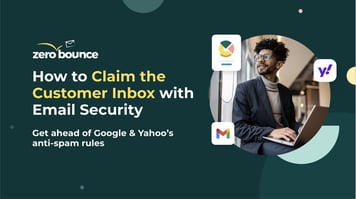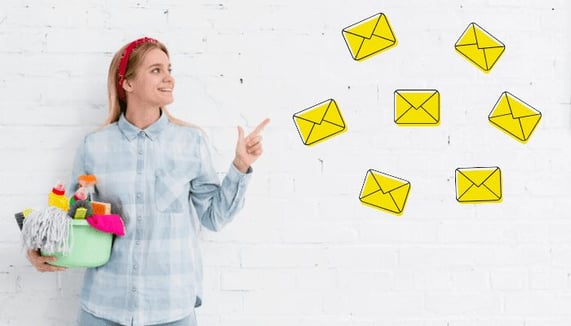
How to Clean Emails for a Healthy Mail List in 2023
Updated on February 7, 2023
Keeping good email hygiene is vital to your email marketing success. But how do you know when to clean your email list? Here are three signs that outdated contacts are sabotaging your performance.
First, let’s look at what it means to clean an email list.
What does email list cleaning mean?
Cleaning a list means running your email contact data through an email verifier to weed out old, invalid or harmful email addresses. Some users abandon their previous address, whereas others on your list may be catch-alls or abuse emails.
Once you’re able to identify the bad data, you can delete those contacts while only preserving the valid ones. Scrubbing all of the unnecessary addresses is how you clean your email list and better your email list hygiene.
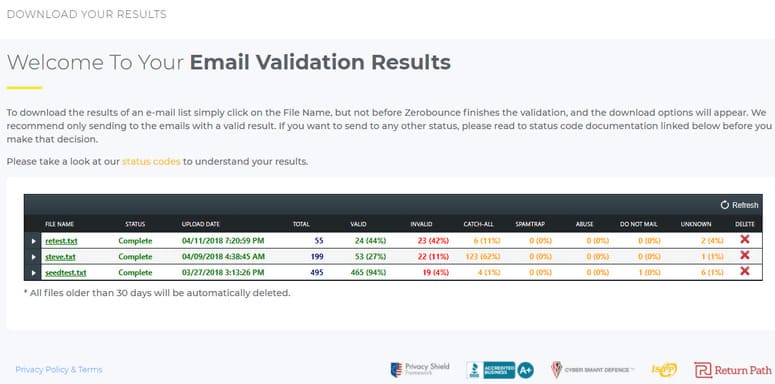
Why do I need a clean email list?
Poor email hygiene has a direct impact on your email deliverability.
You can expect more messages to bounce when your list contains invalid and harmful contacts. This prevents your content from reaching the inbox and causes you to land in the spam folder frequently.
If you maintain poor email hygiene, you may never be able to deliver new messages. Email service providers (ESP) monitor sender reputation and behavior and may suspend your account based on poor sending practices.
Worse yet, some email providers and third-party services may blacklist your domain, meaning your content receives an automatic block.
Clean email lists are free of these risky contacts. It only takes minutes to validate those addresses, leading to many benefits: a better sending reputation, higher open rates, more traffic to your landing pages and more conversions.
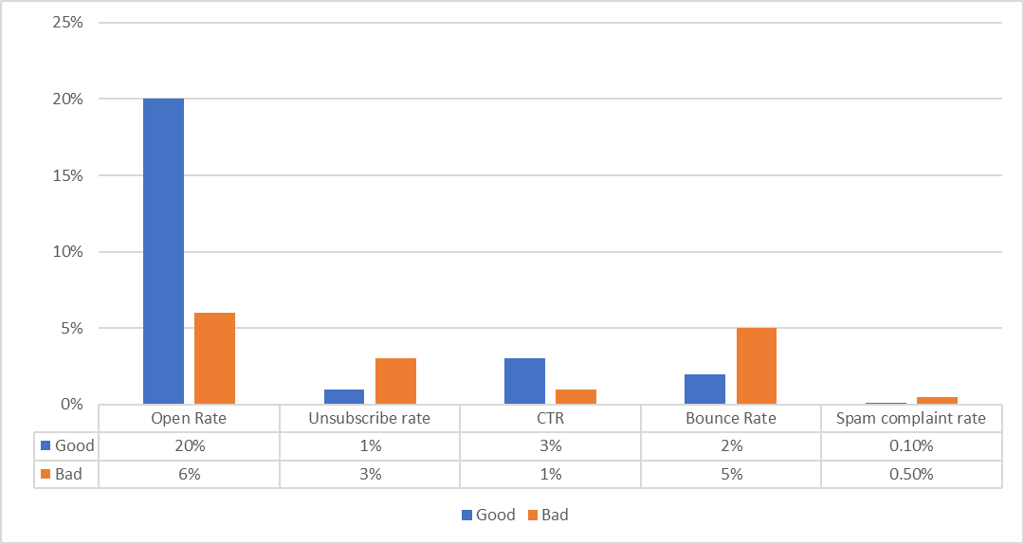
Four signs that it’s time for an email list cleaning
Now that you know the benefits of proper email list hygiene, let’s look at the most common signs that your list needs a good scrub. They’ll help you identify those risky contacts sooner to better safeguard your email campaigns.
Sign #1 – Clean email should not have more than a 2% bounce rate
According to Mailchimp, email bounce rates average between 0.40% and 0.58% across all industries.
It’s not unusual to see a few bounces in a given marketing campaign. Some addresses can become invalid overnight (literally), leading to unexpected hard bounces (permanent). You can also run into bounces if the recipient’s inbox is full. In these situations, your ESP should notify you of a soft bounce (temporary).
Related: Check out this email validation glossary to learn the difference between a soft and a hard bounce.
However, bounces become a problem when your bounce rate exceeds the email industry standard of 2%. Once it rises above this, ESPs notice, and your sending reputation suffers. This has a substantial negative impact on your email deliverability.
You may wonder, “Is it time to clean up my email list?” To find out immediately, assess your current bounce rate by analyzing your recent email marketing reports.
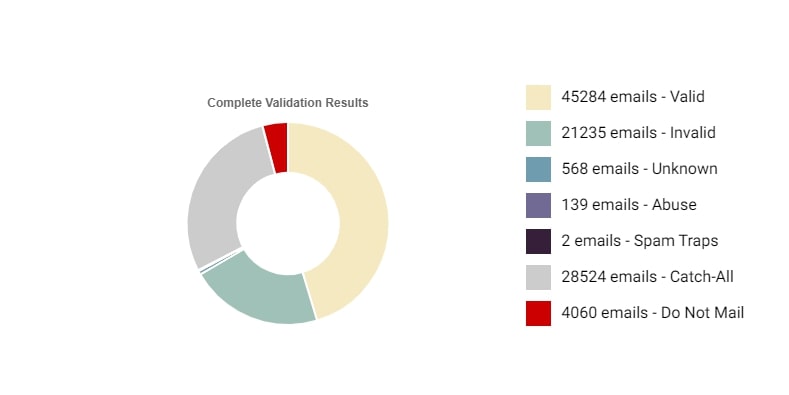
Sign #2 – Your “clean list” gets poor engagement
You wrote your best email yet: the subject line, body and call-to-action should gather a round of applause from your favorite copywriters. You hit “send” with confidence knowing that your email campaign will get results.
And then, silence. You refresh your reports, hoping to see those open and click rates increase. But all you hear is crickets…
Before you blame the content and decide email marketing isn’t for you, consider what else can cause low email engagement – your email list.
While great content creates excellent marketing, it won’t make an impact if you don’t know how to clean an email list. If it’s been longer than six months since your last scrub, bad data is almost certainly impacting your engagement rate.
Even if you maintain a somewhat frequent validation schedule, more contacts can unexpectedly become invalid. People create new addresses, abandon old ones or get a unique address with a new job or promotion. Without warning, once-valuable contacts stop engaging with your content as it’s no longer reaching their inbox.
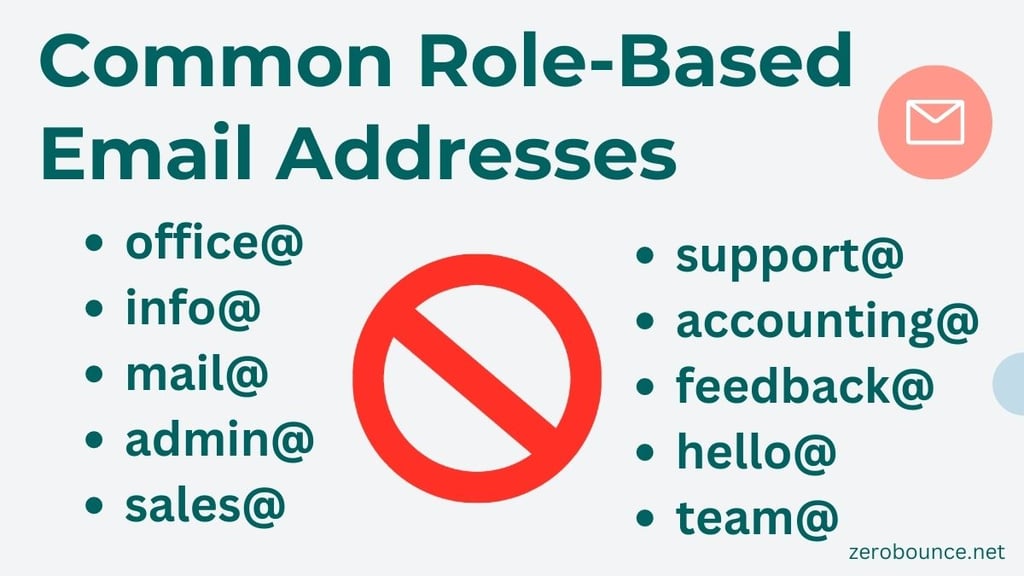
You can also pick up catch-all or role-based emails when seeking potential leads. Because these inboxes often go unmonitored, they’re a gamble for building engagement. Failure to clean your email list of these addresses can cause your metrics to sink.
Low open rates and engagement both factor into your reputation and deliverability. No matter how compelling your content is, even your active subscribers won’t see it because of those low-quality contacts on your list.
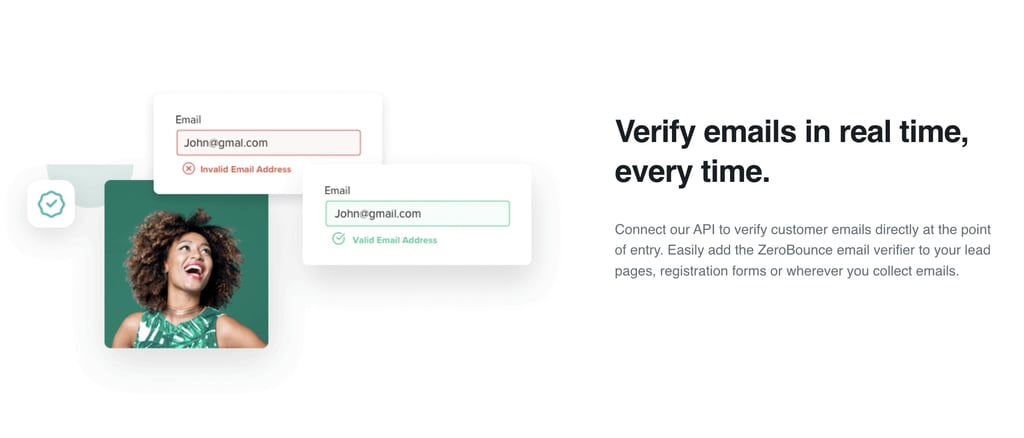
Sign #3 – You didn’t delete emails belonging to spam complainers
It’s essential to pay attention to all your email marketing metrics, including spam complaints.
Like open and click rates, internet service providers (ISPs) use spam complaints to understand your email content better. The number of people complaining about your emails directly impacts how often you reach the inbox.
When more people report your emails as spam, it negatively impacts your sender score. Low sender scores indicate poor email list hygiene and make ISPs wary of untrustworthy, suspicious emails and may prompt them to divert your emails to the junk folder.
According to several studies, the average spam complaint rate is 0.1%. If you notice more users hitting “report spam,” it’s time to clean your email list.
You can proactively weed out habitual complainers by using an email verification API. The ZeroBounce API is easy to install and automatically identifies abuse emails at the point of entry. It then rejects those complainers to preserve the health of your email list.
If spam complaints persist even with clean email lists, reassess your content strategy. You’ll see spam complaints if you send too many emails (the number one reason people unsubscribe). Also, avoid overly promotional content to create a more authentic connection with your subscribers.
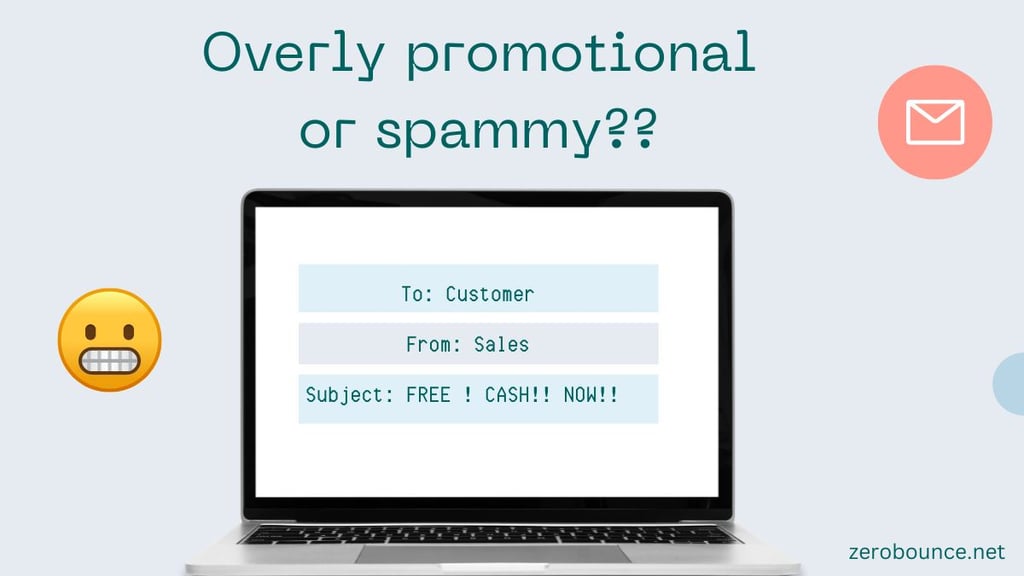
Sign #4 – Your mailing list has a high unsubscribe rate
When the content your company sends to your email list is no longer relevant to subscribers, your unsubscribes will climb.
Giving users a way to opt out of your email marketing is worthwhile and legally necessary. Having someone unsubscribe from your mailing list is preferable to a spam complaint. However, a sudden or consistent rise in unsubscribes can indicate that your email list needs a scrub.
Low engagement and clickthrough rates typically precede high unsubscribe rates. If a user fails to open any of your messages in a six month period, you should delete that contact from your email list. This will also give you a more accurate representation of your open and click rates with your current audience.
Keeping your email list clean eliminates uninterested users and protects your email marketing and lead-generation campaigns.
What are the risks of not cleaning your email list?
In addition to the warning signs, poor email list hygiene can have catastrophic consequences on your business.
Here are just a few things that happen to email users who don’t clean their lists. This includes ZeroBounce clients before they began using our email verification service.
Your sender reputation suffers without a clean email list
If you don’t scrub your mailing list regularly, you’re bound to have many invalid or risky addresses.
These include abuse emails, spam traps, catch-alls and countless do-not-mail addresses. Sending messages to these contacts bears negative consequences, including more bounces, more spam complaints and a poor sender reputation.
ESPs only want to work with users that commit to safe sending practices. If you exercise no regard for your email list hygiene, your behaviors look like that of a spammer. That negative reputation follows you, and ESPs won’t want to work with you.
If you can’t keep your email list clean, you may find yourself on a blacklist
A poor sender score can have more significant consequences than making you seem like a spammer. Some may choose to add your domain to a blacklist and automatically reject your content entirely.
Different types of email blacklists exist. There are public services that identify and collect malicious domains and share that information with ISPs. Likewise, some businesses and corporations use private blacklists for enhanced email security.
Once your domain is on a blacklist, ISPs will automatically reject incoming emails from your domain. Your reputation caught up to you, and restoring your sender score can be extremely difficult.
ESPs can suspend your account if you don’t clean your email addresses
ESPs like Mailchimp, Constant Contact, Outlook, etc., know the importance of proper email-sending practices. If you review their terms of use, you’ll find that all users must adhere to these rules to maintain their accounts.
If your email account exceeds the allowed bounce rate (remember the standard – 2%), receives too many spam reports or has too many invalid email addresses, they can suspend your account. You won’t be able to resume any email marketing campaigns until you perform a proper email list cleaning.
Even if you give your email list a good scrub, these providers can reserve the right to maintain your account suspension based on previous behaviors. If you consider email a vital resource for your business growth, you can’t afford to lose your account due to poor email list hygiene.
How to delete addresses for a clean email list
Cleaning email lists is easy; you can validate your contacts in bulk or real time. While they work differently, both methods are efficient and help you achieve your true goal: keeping your database fresh and productive.
Method 1 – Bulk email list cleaning for healthy mailing lists
You’ll want to validate every contact if you already have an active email list. This will identify which addresses belong to genuine, active subscribers and which ones are just bad data.
Once you decide on a trustworthy, accurate email verification service, upload your email list to the platform. With ZeroBounce, you can prune a list of 100,000 addresses in about 45 minutes with 99% accurate results guaranteed. More extensive lists will take longer, but only a couple of hours.
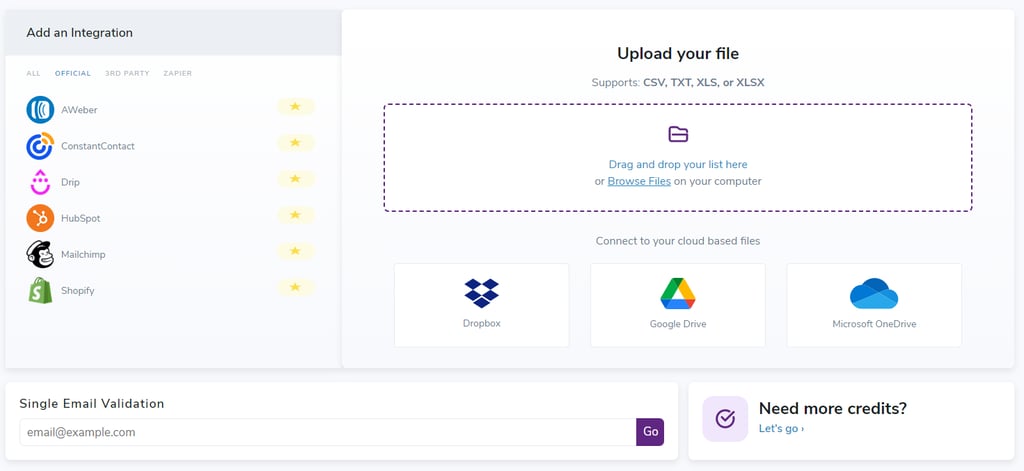
Once the process completes, you’ll receive a notification to download your results. You’ll have a full breakdown of which addresses are safe to email and which you need to prune from your list.
The process is even easier if the validation service integrates with your ESP. Once you enable the integration, you simply import your list, validate it, then export it back to your ESP.
Method 2 – Clean email addresses in real time with an API
Removing risky contacts from your existing list is easy. The more significant challenge is keeping that is maintaining that email list hygiene for as long as possible.
One of the best ways to achieve this is to add an email validation API to your signup and registration forms.
Cleaning email lists becomes more manageable when the API prevents invalid addresses from spoiling them quickly. Like the bulk email verifier, the API can detect invalid or risky contacts. But instead of removing them all at once, it rejects harmful emails as users enter them into the form.
How do you get an API?
Every reliable email verification service will provide you with an API key. You can add this code to your website and landing pages with virtually no coding knowledge necessary. Once you add it, the API will instantly verify every new subscriber’s email for accuracy and safety.
Related: Learn how the ZeroBounce email deliverability toolkit helps you reach the inbox

Additional strategies to assist with email list hygiene
Though an email validation tool like ZeroBounce is necessary for any online brand, the most successful company is a proactive one. In other words, don’t wait for your email list to bring negative results before you take action.
Here are some additional email marketing strategies you should consider before you hit publish on your next campaign.
Demonstrate how your company uses best practices for privacy and security
It’s essential to think about how you present your company to new customers when devising a marketing strategy. It’s tough to attract legitimate subscribers if they believe that your website or signup forms will put their privacy at risk.

It doesn’t matter how good your call-to-action is for that impressive eBook. Users can bypass the opt-in process by generating disposable email addresses, which work long enough to make it onto your email list and claim the freebie.
On the other hand, you’ll find greater success with genuine email lead generation if you can demonstrate your data protection efforts to the customer.
Provide mailing list subscribers with a way to unsubscribe from the newsletter
An unsubscribe button servers multiple purposes.
First, it’s legally necessary. If you acquire an email address from a customer that did not subscribe, such as through buying email lists, the user must be able to unsubscribe. You should not send email content to users who did not opt in to your newsletter or mailing list.
Second, an unsubscribe button is necessary to get past spam filters. Most ESPs will automatically identify spam content if it does not have the typical hallmarks of proper email management.
Finally, the unsubscribe button will help your campaign performance. If a prospect or customer is no longer interested in your emails, it’s better for them to opt out. Otherwise, all those inactive subscribers on your mailing list will unnecessarily cause your open and clickthrough rates to plummet. Additionally, if they cannot unsubscribe, they will report your emails as spam.
Use double opt-ins to protect your reputation and keep your bounce rate low
Implementing double opt-ins for your newsletter is a popular and effective email marketing strategy. Whenever customers enter their email into one of your lead-generation campaigns, they receive an automated email asking to confirm their subscription.
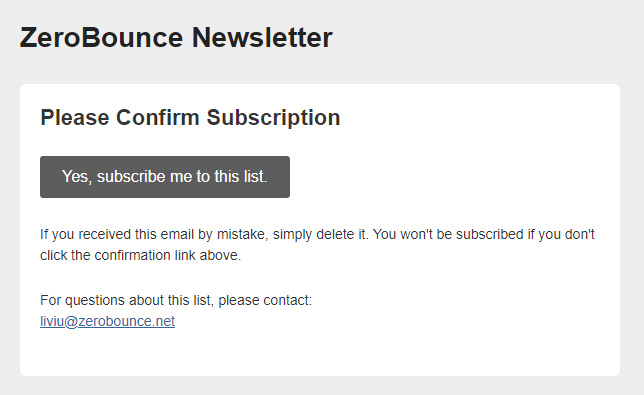
This mass email strategy accomplishes two things. First, it ensures the customer has a valid email inbox. Secondly, it asks users to engage with an incoming message to verify their subscription actively. If they don’t complete the double opt-in, their email address won’t make it to your email list.
It’s easy to pick up emails on a landing page or sign-up form, especially if you aren’t using an email verification API. Many customers have no problem sharing an address or creating a disposable email to claim your online marketing offer or eBook. However, only those that genuinely want to engage with content are likely to take the extra step.
Double opt-ins help maintain your email list hygiene and ensure that your emails reach the most active, qualified subscribers.
Allow email list subscribers to select the email content they want to see
Segmenting your email lists is an excellent way to generate quality engagement.
Many brands often distribute their email content to one mass email list. However, in a list of thousands of subscribers, each has different reasons to choosing to subscribe.
Some many want to hear everything your company has to share. Others may only want to hear about special discounts or promotions. One tactic to distinguish between the two is to ask new subscribers about which type of content they wish to see. This will automate segmenting those addresses into the appropriate mailing lists.
Digital marketing now calls for highly-personalized content, especially for email. You’re likely to see lower bounce rates and higher clickthrough rates when your email messages effectively target the right audience.
Automate email content to stay consistent both in message and frequency
Take advantage of email automation tools to ensure your company stays on schedule.
Customers expect to hear from company marketing teams on a predictable basis. It can be once a week, bi-weekly, or any other pattern that nets your team positive results. However, it’s not ideal to stray from this schedule without proper reason.
If you send too little email content or begin to spam inboxes, your email marketing metrics are likely to suffer. Your open rates are likely to fall along with overall engagement. You may also risk annoying customers with ill-timed, irrelevant messages that prompt them to report you as spam.
Avoid developing a toxic relationship with your email list by creating a content schedule and leverage email automation tools like Constant Contact or Mailchimp to stay on task.
Delete unengaged addresses showing low clickthrough rates
Finally, don’t wait for inactive customers to unsubscribe. If you notice inactive email addresses on your mailing list, take the initiative and delete them before they negatively affect your email marketing results.
You don’t necessarily need to think of a customer or lead as lost. You might incorporate them into a segmented list for future re-engagement efforts. However, if they’re currently showing low clickthrough rates, it’s unlikely that your current marketing strategy is for them.
Scrub your email list and eliminate those addresses that aren’t helping you reach your goals.
Is email list cleaning on your to-do list? Scrub and delete email addresses for free
If you’re ready to purge those toxic contacts from your list, you can try it now at no cost.
ZeroBounce offers a free email verifier with the same trustworthy and accurate results we provide to our clients.
You’ll eventually need to graduate to a bulk email validation system if you have hundreds of thousands of email addresses on your list. Rather than manually checking them one at a time, you can upload the entire list for complete verification.
Get started now by creating your free account. You’ll be able to clean an email list of 100 addresses for free every month.
Want to learn more about cleaning email lists and other strategies that help you hit the inbox?
Our COO Brian Minick shared some valuable email deliverability tips in this webinar for eSputnik. If you have any questions, our team is online and available to assist with your list cleaning 24/7.




